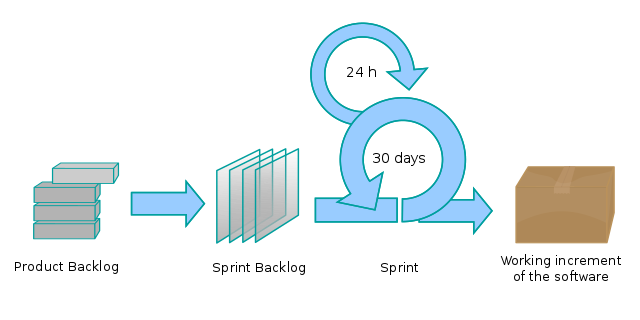A healthy product backlog is a necessary starting point for any successful product life cycle. The product backlog is owned and managed by the product team.
Some famous examples of the product life cycle can be found here.
This article will discuss the importance of a healthy backlog along with important concepts like definition of ready (DoR), definition of done (DoD) and continuous product backlog refinement.
We will also answer the important question of product backlog ownership.

The ability to effectively build and manage a healthy product backlog is an essential product management skill.
Product Backlog Definition
The product backlog is a feature level document that feeds on high level objectives as per the product roadmap.
In other words, the high level objectives for a long period of duration are a part of the product roadmap.
The product backlog is at a more granular level by breaking down those high level objectives into smaller features.
When building a product backlog, the product team should keep in mind that priorities can change very quickly.
Therefore, a product backlog cannot be set in stone.
The backlog should be a living document.
And because it is a living document, we will hear many teams use the adjective of ‘healthy’ to describe the backlog!
It is very important to remember the principles of agile methodology, especially in the context of regular updates to the backlog.
After all, no backlog would be manageable using the waterfall method.
Definition of Ready (DoR)
The definition of ready refers to the stage when a user story is ready to be picked up by the tech team within a sprint.
While defining individual user stories, it is good to put in more details.
However, the details should not come in at the cost of simplicity.
In other words, the definitions should be elaborate, yet simple.
It is important to keep the KISS principle in mind here.
In most companies, it is the responsibility of the scrum master to make sure that the development team is not picking up user stories that do not meet this definition.
Definition of Done (DoD)
The definition of done (DoD) refers to the stage when the tech team is done with a user story and is ready to pass on that user story to the product team to conduct a UAT.
The DoD is what drives the software development life cycle (SDLC).
During this stage, it is very important for the development team to put forward their product opinions.
Learn how developers can contribute to product management.
The product team, along with the scrum master, have joint ownership of making sure that the definition of done is met.
Product Backlog Refinement
The product backlog refinement is a continuous process that should be undertaken by the product team, in consultation with the scrum master and the technical lead.
Many product teams fail to take into account changes in the market or new releases by the competition.
In fact, some product teams become complacent after releasing an initial version of the backlog.
There cannot be a greater injustice to the role of product management than abandoning a product roadmap.
It is a given reality that the competition is not sleeping.
Everyone is working hard and trying to release new features.
Competition is good.
It is important to keep our eyes and ears open and be nimble when it comes to responding to change.

This would be a good time to understand the top 15 benefits of scrum.
The sprint backlog is a natural subset of the product backlog.
The sprint backlog is the responsibility of the scrum master, in partnership with the technical lead.
The product team should definitely be a part of process and have a say in the finalization of the sprint backlog.
This synergy is important to develop a great product.
Lack of coordination is a big reason why many products end up failing.
Check out the list of the top 10 biggest product fails of all time.
Product Backlog Ownership
The product owner is the ultimate owner of the product backlog.
This would be a good opportunity to make sure that we understand the following differences.
The success of the product determines the career path of the Product Manager.
Many product teams prefer using a Kanban board to give a visual appeal to the product backlog.
Or as Atlassian would call it, Kanplan.
This is also a good time to understand the full list of roles and responsibilities for a Product Manager.

This would be a good time to go over the top 15 benefits of Kanban.
Atlassian tools like Jira and Trello are of definite use here.
Check out the top differences between Trello and Asana.
I would like to talk about one major benefit of the Kanban board.
And that is the visual satisfaction of marking tasks as “Done”.
Marking something as visually “Done” gives a sense of instant gratification to all stakeholders.
And this sense of completion is very important for the development team.
If using the Kanban board, the product team should try and make it easily accessible to all stakeholders.
Conclusion
By now, this article would have given you a good understanding of the basics of building a healthy product backlog.
The product backlog is not the same as the product roadmap.
This will help anyone who is looking to become a Product Manager.
As with any process, there will be conflicting opinions as to what goes in, and what stays out.
Different people will have their own ideas.
And that is a good thing.
These are moments for the Product Manager to showcase important leadership skills.
Not to forget the importance of learning to influence without authority!
There are many tools available that can help with the task of building and managing a backlog.
There are many courses available to become a Product Manager. And almost all courses focus on the important skill of managing a healthy product backlog.



